AI decision-making platforms are transforming businesses by automating complex processes, analyzing large datasets, and reducing human error. In 2025, demand for these tools is skyrocketing as companies strive to improve efficiency and handle growing data challenges. Here's a quick look at the top platforms:
- CrewAI: Affordable ($29/month), multi-agent collaboration for marketing, operations, and customer service.
- Vertex AI Agent Builder (Google): Scalable, integrates with Google Cloud for enterprise-level tasks.
- Kubiya.ai: Focused on DevOps automation with strong security and integration capabilities.
- H2O.ai: Open-source AutoML platform with transparent decision-making and real-time scoring.
- Lindy AI: AI-powered assistant for task automation, starting at $19/month.
- Relevance AI: No-code workflow builder for marketing and content decisions.
- IBM Watson: Enterprise-grade platform for hybrid cloud environments, tailored for industries like healthcare and finance.
Each platform offers unique strengths, from cost-effective solutions for small teams to enterprise-level tools for large-scale operations. Choose based on your specific needs, budget, and technical requirements.
AI Decision-Making: The Good and the Bad and How to Use it to Improve Your Digital Business
1. CrewAI
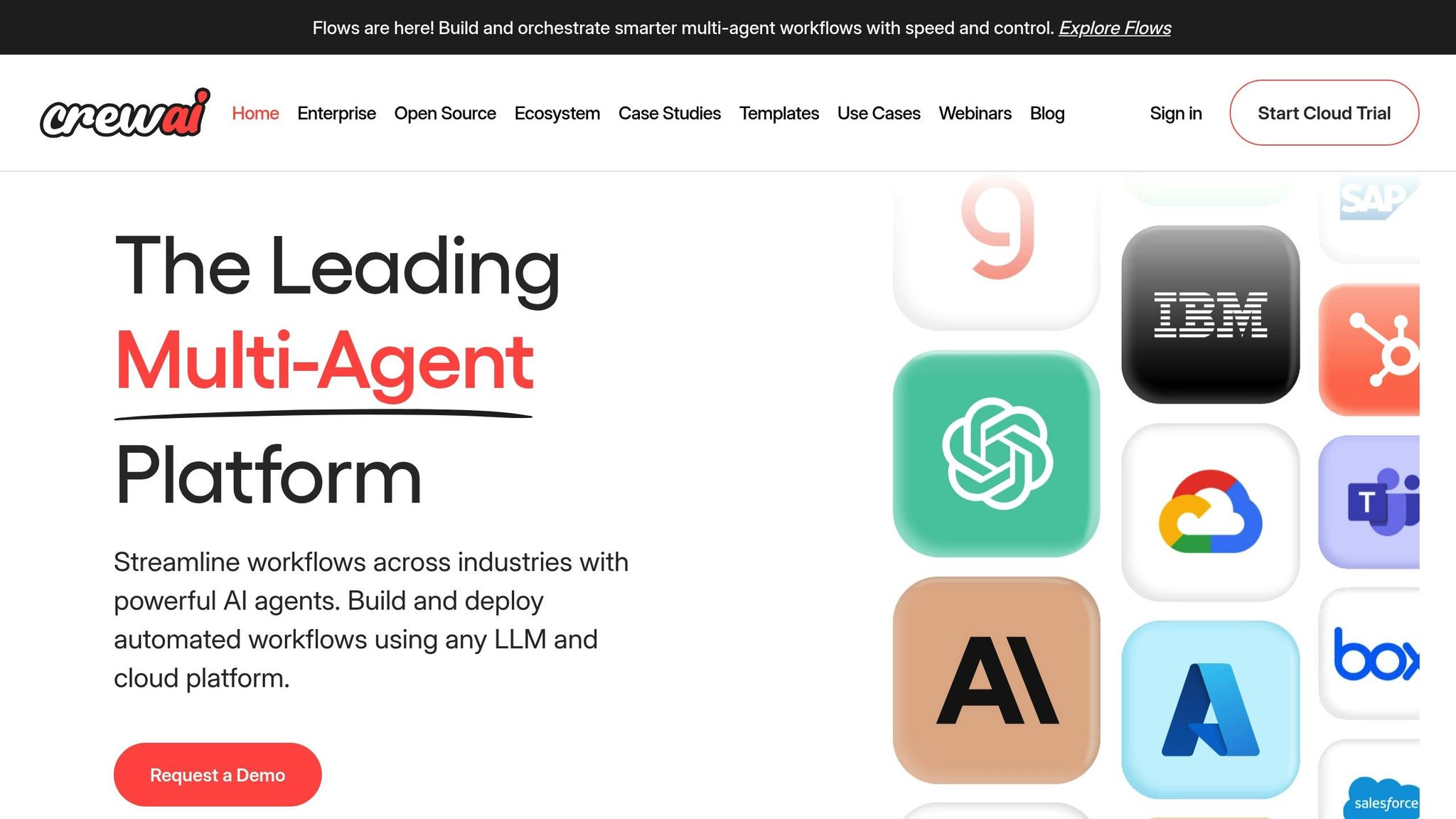
CrewAI offers fast, data-driven decision-making powered by advanced analytics and real-time processing. Starting at just $29/month for small teams, it provides an affordable solution for businesses looking to enhance efficiency. One of its standout features is its ability to support multi-agent collaboration, enabling companies to deploy specialized AI agents that work together to tackle complex challenges in areas like marketing, operations, and customer service.
The platform’s scalable design ensures it can meet the increasing demands of modern businesses, seamlessly integrating with existing workflows. It also provides clear decision audit trails, making the entire process more transparent and easy to track.
Up next, learn how Vertex AI Agent Builder is changing the game in autonomous decision-making.
2. Vertex AI Agent Builder (Google)
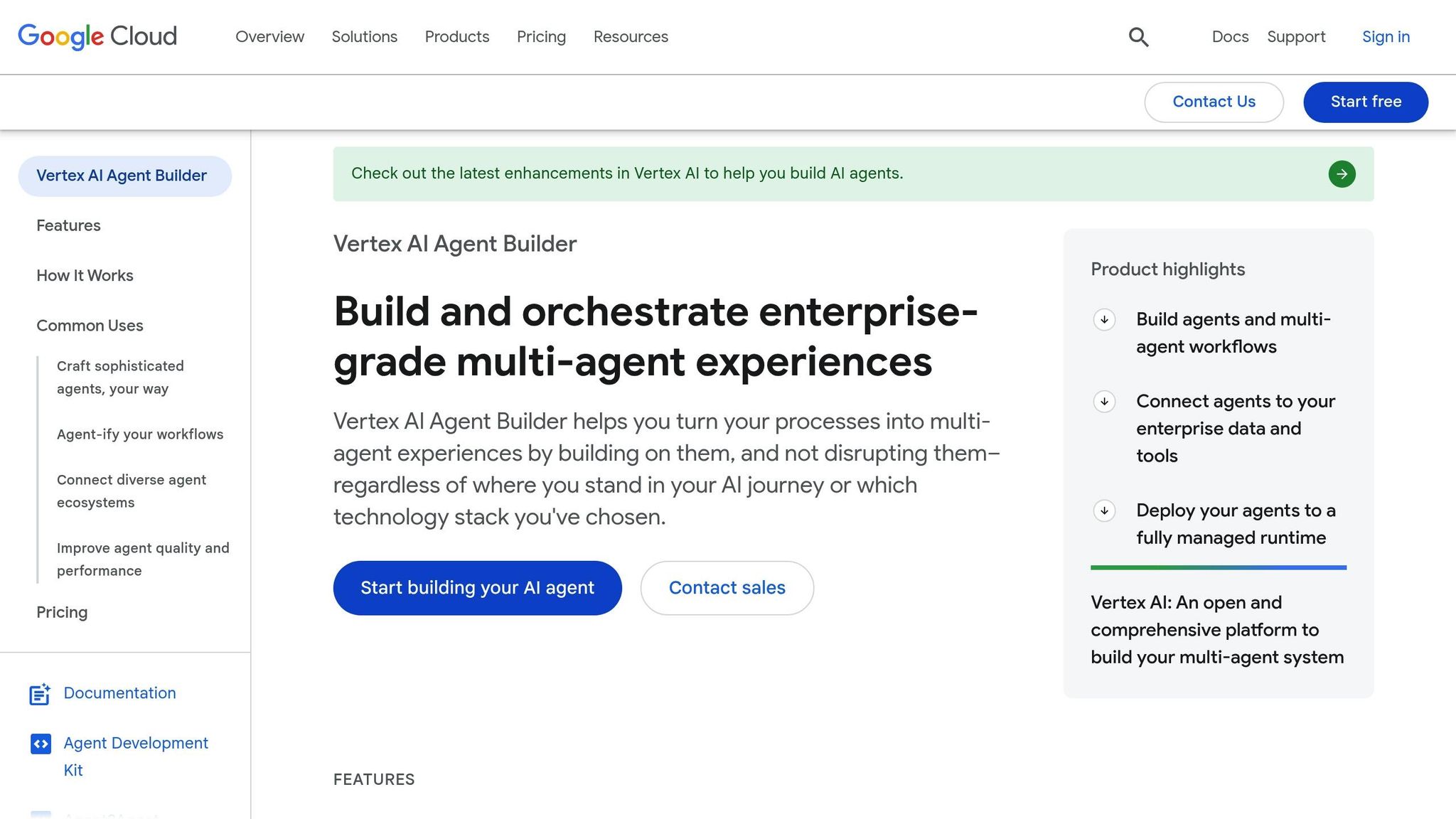
Google's Vertex AI Agent Builder is part of the Vertex AI suite within Google Cloud. It’s designed to help businesses make smarter, real-time decisions by leveraging machine learning and natural language processing (NLP). This tool empowers enterprises to turn their data into actionable insights.
Key features for smarter decision-making
With Vertex AI Agent Builder, businesses can create AI agents that are context-aware, allowing them to simplify decision-making processes across various applications. The platform is built to address common business challenges by offering tailored solutions for efficient decision-making.
Seamless integration with Google Cloud
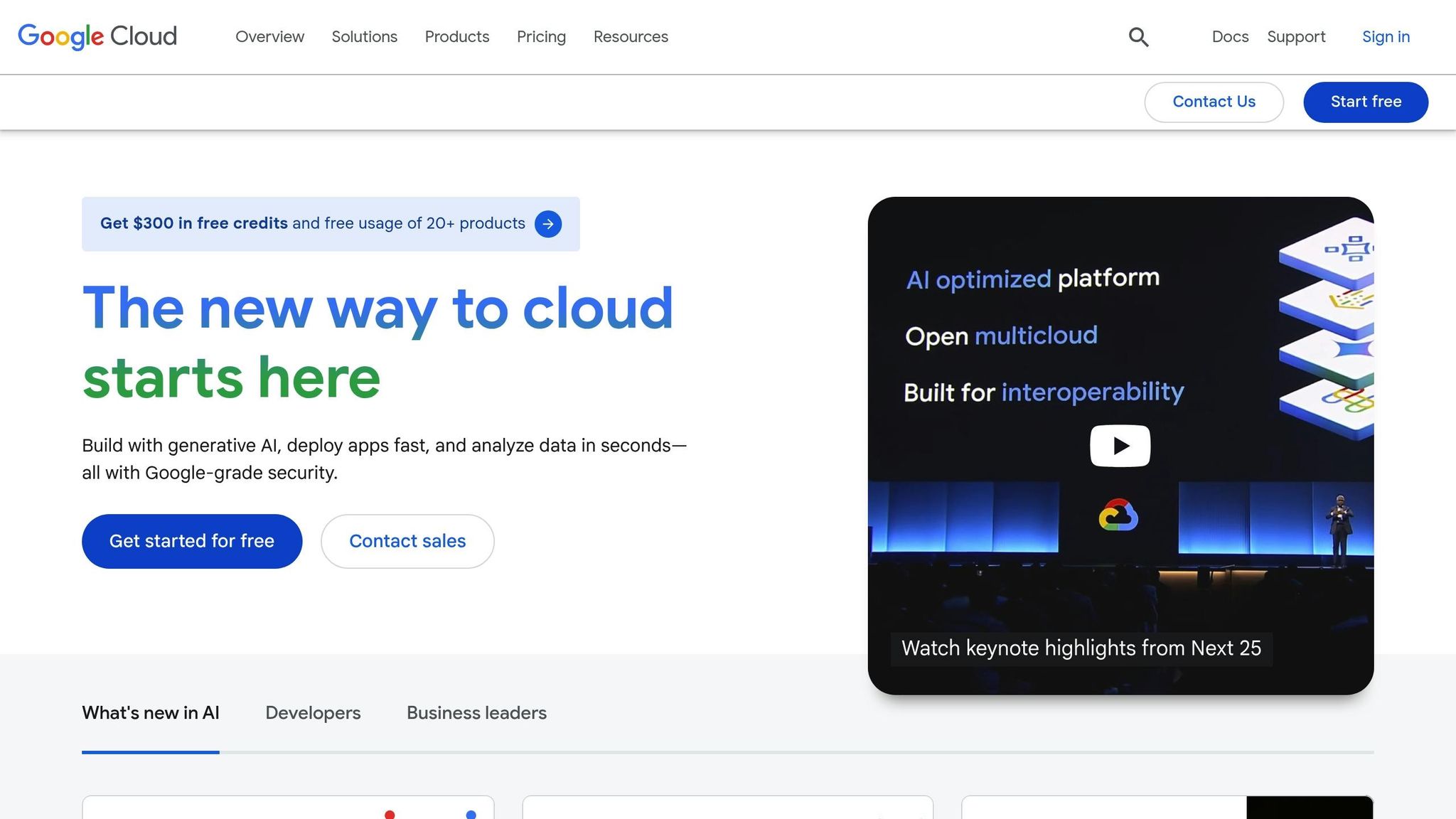
One of the standout aspects of Vertex AI Agent Builder is its ability to integrate with other Google Cloud services, such as BigQuery. This connection enables businesses to analyze data efficiently and identify trends, making it an excellent choice for handling data-heavy tasks within the Google Cloud ecosystem.
Versatile use cases and scalability
The platform is versatile enough to automate both routine and mission-critical decisions across different industries. Whether you're working on a small project or managing enterprise-level operations, Vertex AI Agent Builder offers scalability and a flexible pricing structure to meet diverse needs.
Next, let's explore how Kubiya.ai is reshaping decision-making in DevOps.
3. Kubiya.ai
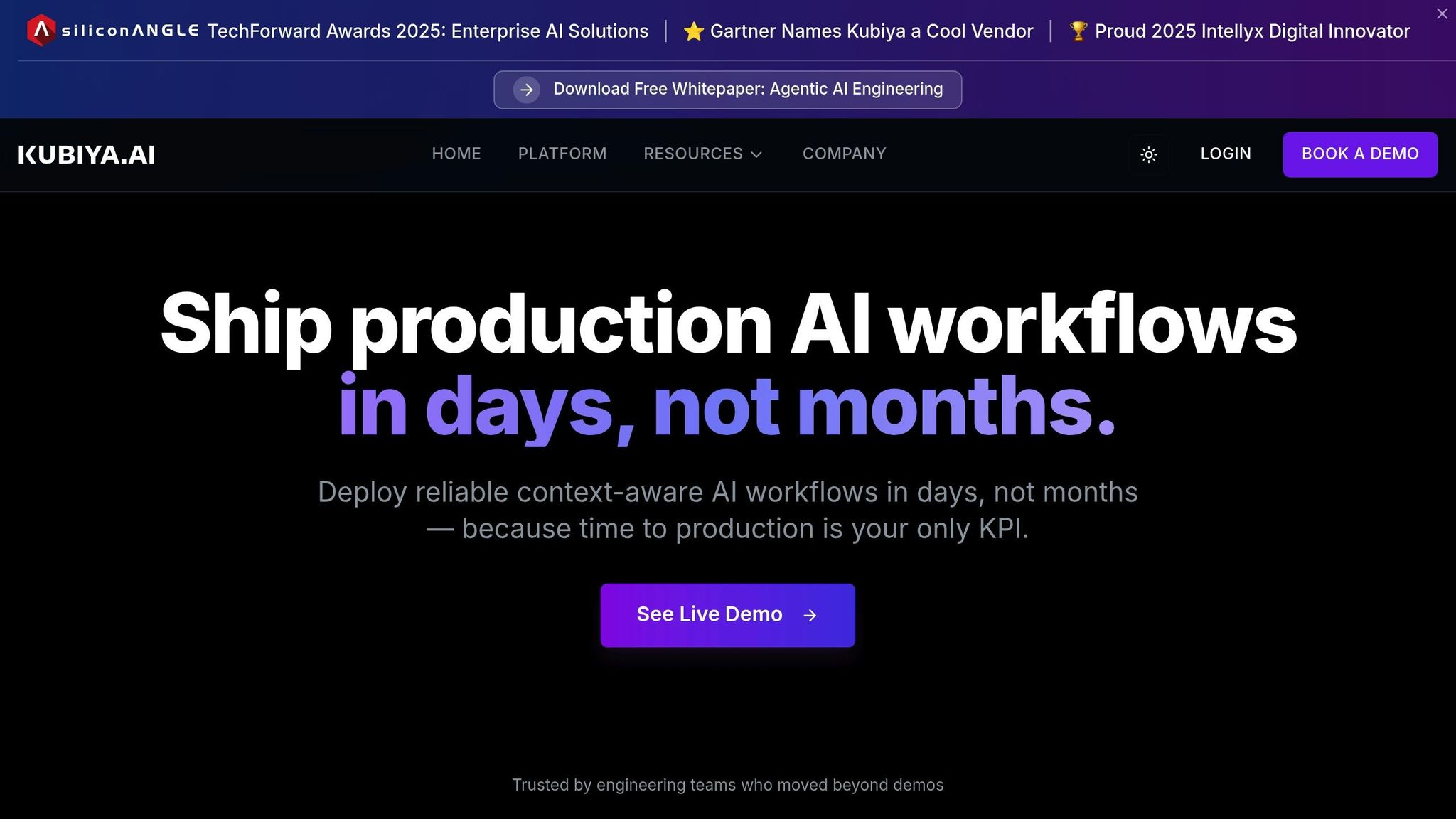
Kubiya.ai combines natural language processing with containerized execution to enable autonomous decision-making in DevOps. It’s earned recognition as a TechForward Awards 2025 Enterprise AI Solutions Finalist and a Gartner Cool Vendor, highlighting its impact in the field.
Key features for autonomous decision-making
Kubiya.ai focuses on delivering AI agents that are context-aware, secure, and dependable. By leveraging natural language processing and containerized execution, it ensures intelligent and predictable outcomes. The platform boasts a stellar 4.8/5 rating for accuracy and reliability, along with an impressive 4.9/5 for data privacy and security. These ratings underscore its suitability for mission-critical DevOps tasks, where both performance and security are non-negotiable.
Integration capabilities and primary use cases
Kubiya.ai acts as a conversational automation layer, seamlessly integrating with existing developer tools and infrastructure. This allows teams to continue working within their current DevOps environments without the hassle of overhauling workflows. Its conversational AI interface simplifies operational tasks, making processes more efficient. However, the platform’s strong focus on DevOps might limit its application to broader business decision-making scenarios.
Adoption and scalability
Kubiya.ai has achieved a solid 4.6/5 overall rating and a 4.7/5 for functionality, reflecting its popularity in the DevOps community. Its influence is further highlighted by its recognition as a Proud 2025 Intellyx Digital Innovator. While initial setup may require some customization, the platform’s user-friendly interface helps speed up the adoption process.
Next, let’s take a closer look at how H2O.ai approaches enterprise-grade AI decision-making.
4. H2O.ai
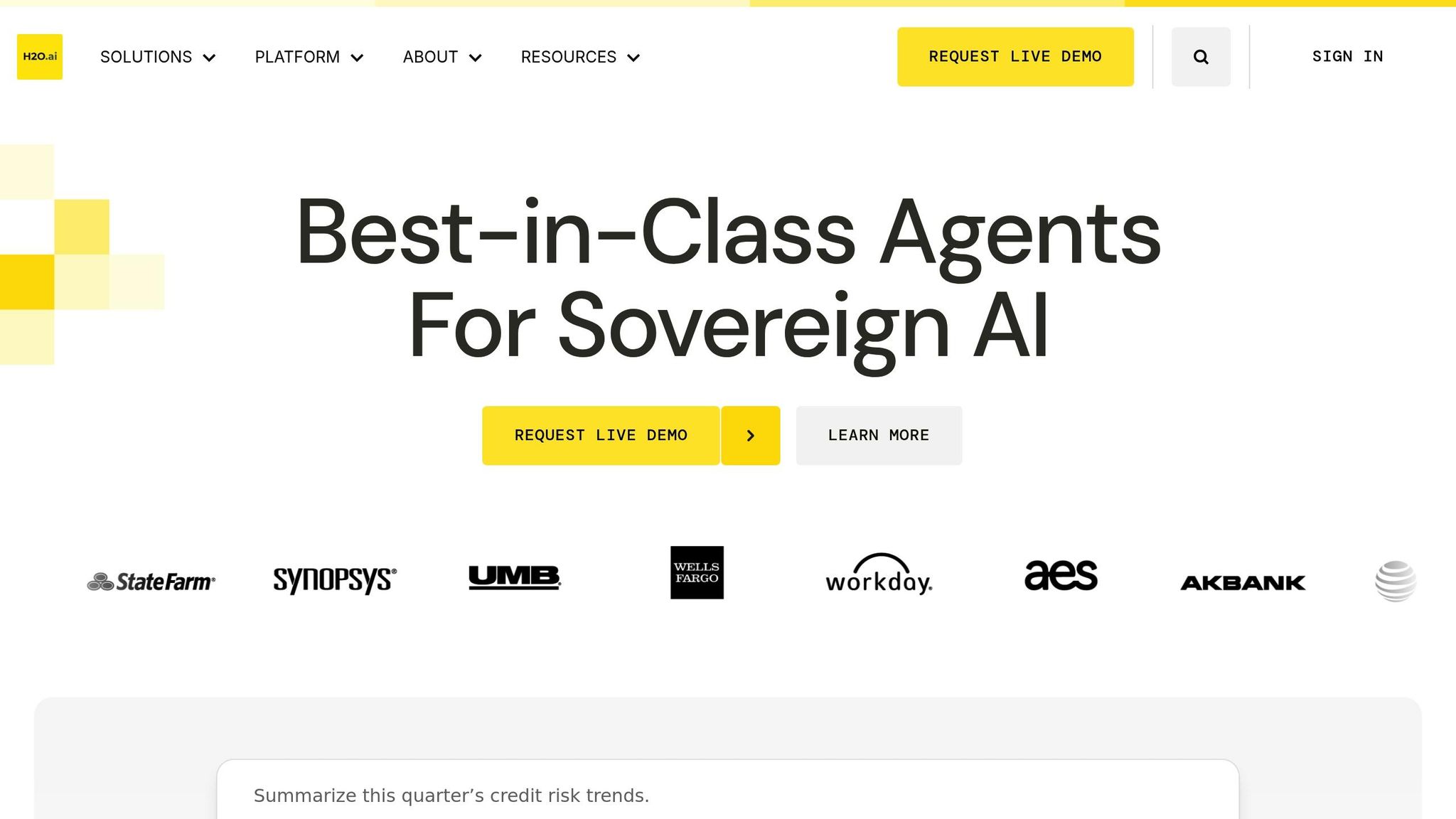
H2O.ai is an open-source machine learning platform that brings AutoML capabilities to the table, making AI solutions accessible - even for teams with limited data science expertise.
Key Features for Smarter Decisions
The platform’s Driverless AI takes care of the heavy lifting by automating tasks like feature engineering, model selection, and hyperparameter tuning. It works seamlessly with both structured and unstructured data, saving time and effort.
For industries requiring transparency, H2O.ai offers built-in explainability, ensuring decisions are clear and auditable. Plus, its real-time scoring feature helps users make timely decisions when speed matters most.
Seamless Integration Options
H2O.ai is built to integrate with major platforms like Snowflake, AWS, Azure, and GCP. It supports multiple programming languages, including Python, R, Java, and Scala, making it versatile for various tech stacks.
Its REST API simplifies integration and deployment, while Kubernetes compatibility ensures scalable deployments across hybrid or multi-cloud setups.
Real-World Applications
H2O.ai shines across industries:
- Finance: Credit risk assessment and fraud detection.
- Retail: Dynamic pricing strategies and inventory management.
- Healthcare: Predictive analytics for patient outcomes.
- Manufacturing: Predictive maintenance and quality control.
Built for Growth
H2O.ai is designed to handle large-scale data processing, making it suitable for everything from small proof-of-concept projects to enterprise-wide AI initiatives. Its flexible pricing model allows businesses of all sizes to adopt and scale AI solutions as their needs grow.
Up next, discover how Lindy AI leverages an agent-based architecture to redefine conversational decision-making.
sbb-itb-212c9ea
5. Lindy AI
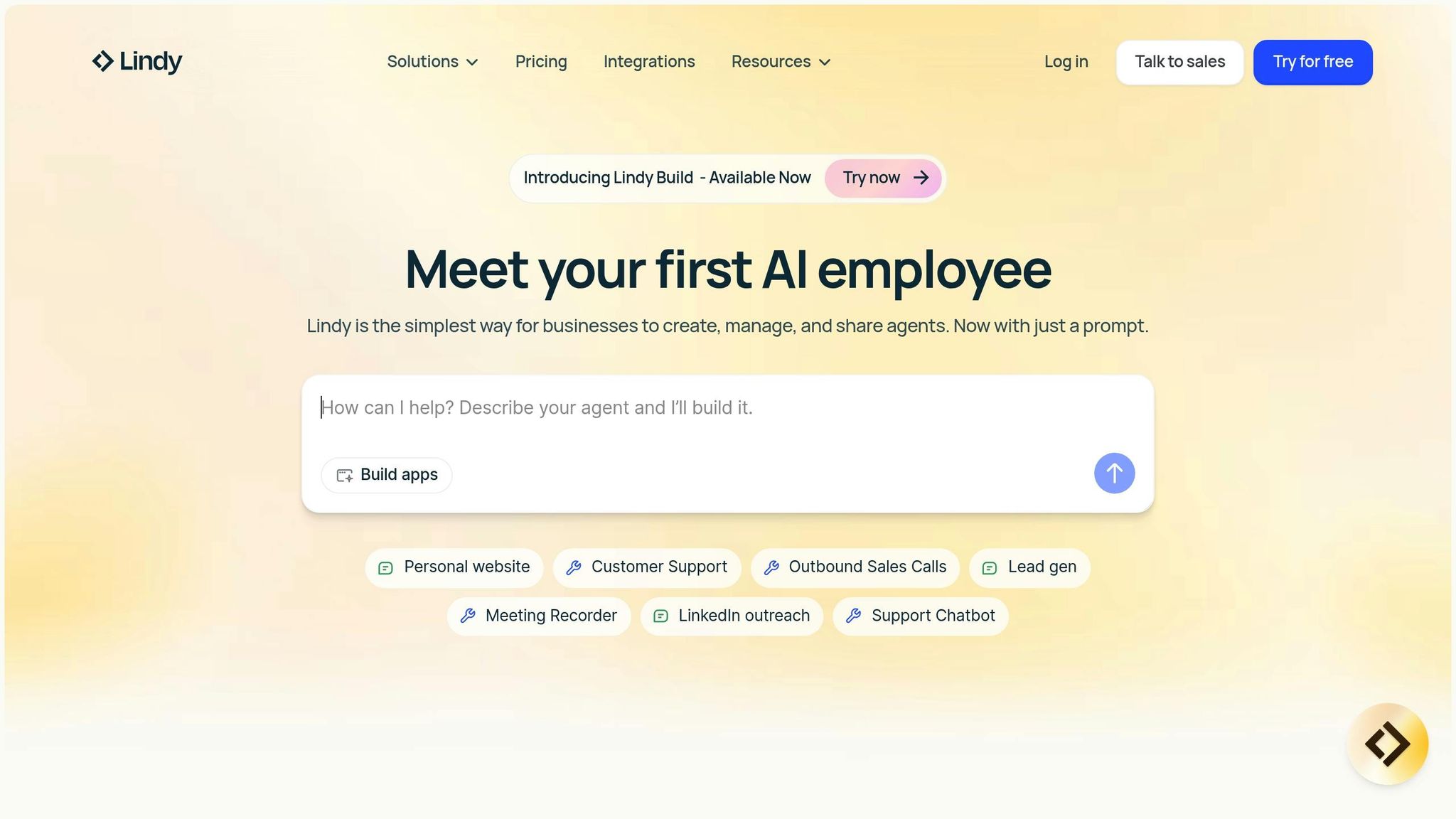
Lindy AI is an AI-powered personal assistant designed to simplify routine business decisions through automation. Unlike older, rule-based systems, Lindy uses natural language processing to understand context and make more nuanced decisions across a range of business tasks.
Key Features for Smarter Decision-Making
With a conversational AI interface, Lindy lets users create decision workflows using plain English commands. It can analyze incoming data, weigh multiple factors, and make decisions based on set criteria - no constant human input required.
Thanks to its adaptive learning, Lindy improves over time by learning from feedback and past outcomes. It also supports multi-step reasoning, making it capable of navigating complex decision trees that involve multiple stakeholders or approval layers.
The real-time monitoring feature keeps track of decision outcomes and delivers detailed analytics. This helps businesses measure the impact of automated decisions and fine-tune their parameters for better results.
Integration Options
Lindy AI works seamlessly with tools like CRM platforms (Salesforce, HubSpot), project management apps (Asana, Notion), and communication tools (Slack, Microsoft Teams). It connects via APIs, webhooks, Zapier, and even email processing, making integration flexible and straightforward.
Top Use Cases
Lindy AI is versatile and can handle various business functions, such as:
- Customer service: Prioritizing tickets and routing inquiries efficiently.
- Lead qualification: Analyzing prospect data to identify high-potential leads.
- Project management: Automating task assignments, adjusting deadlines, and managing resources.
- Content approval: Reviewing submissions to ensure they align with brand guidelines.
- Sales pipeline management: Updating deal stages, scheduling follow-ups, and flagging opportunities at risk.
Pricing and Scalability
Lindy AI offers a freemium model starting at $0, with paid plans beginning at $40/month. It’s designed for both individual users and teams, featuring cloud-based architecture and role-based permissions to ensure secure and efficient operation.
Next, take a look at how Relevance AI combines workflow automation with advanced models for smarter decision-making.
6. Relevance AI
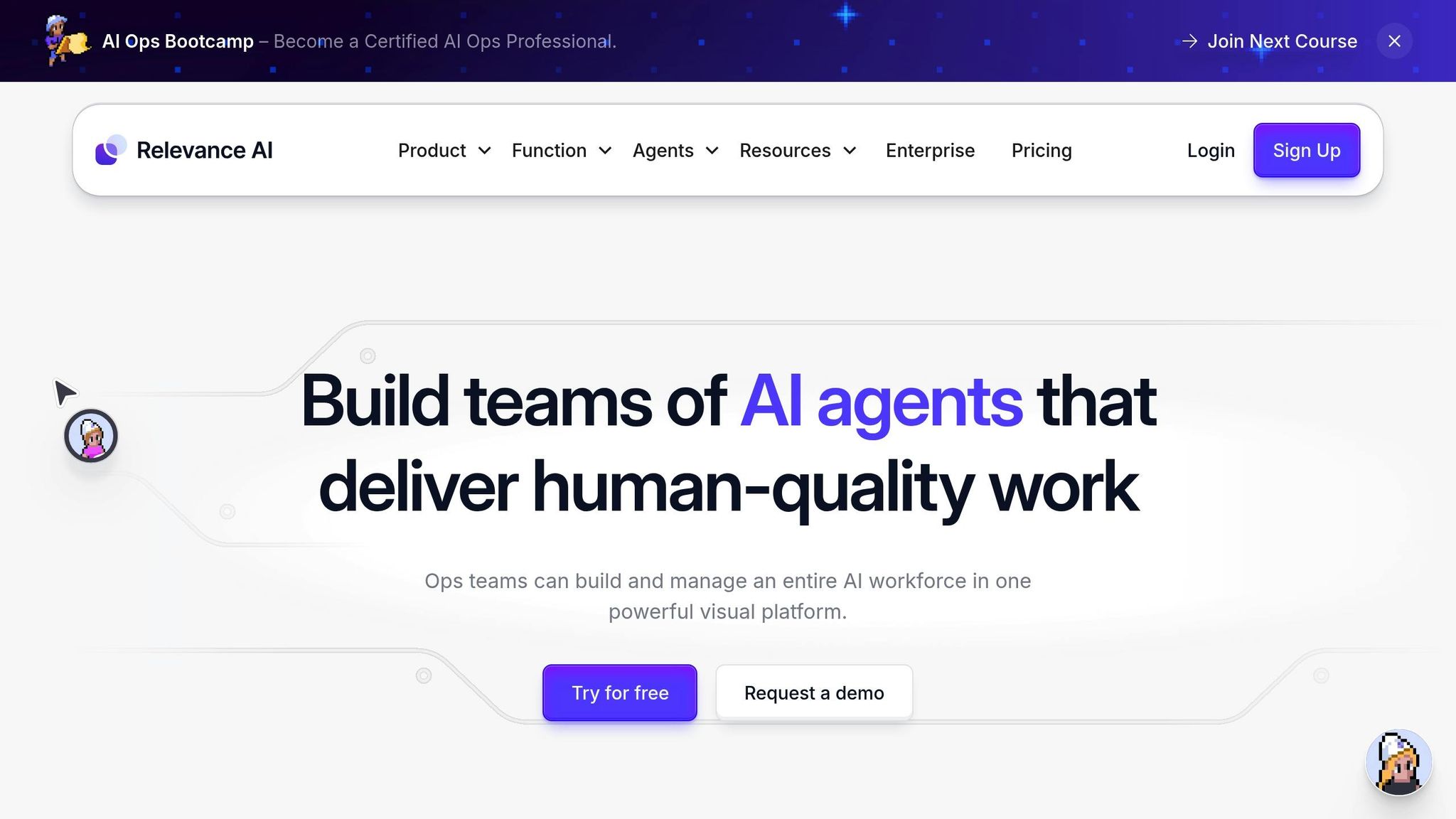
Relevance AI takes inspiration from Lindy AI's conversational style but focuses on simplifying automated decision-making workflows. This platform offers a no-code solution that lets users build workflows by combining various AI models with real-time data.
Key Features for Automated Workflows
- Visual Workflow Builder: Design and adjust workflows using an intuitive, visual interface.
- Data Integration: Pulls information from multiple sources to enable well-informed decisions.
- Real-Time Processing: Processes incoming data instantly to ensure decisions are always current.
Seamless Integration
Relevance AI supports API-based integrations, making it easier to connect with existing business systems and improve workflow efficiency.
Common Applications
The platform is particularly useful in areas like market research analysis, content moderation, and customer segmentation. These tasks often require processing large datasets and extracting insights to drive automated decisions.
Flexible and Scalable
With a usage-based pricing model, Relevance AI can accommodate everything from small teams to large enterprises. It also includes collaboration tools to help teams manage and refine workflows effectively.
7. IBM Watson
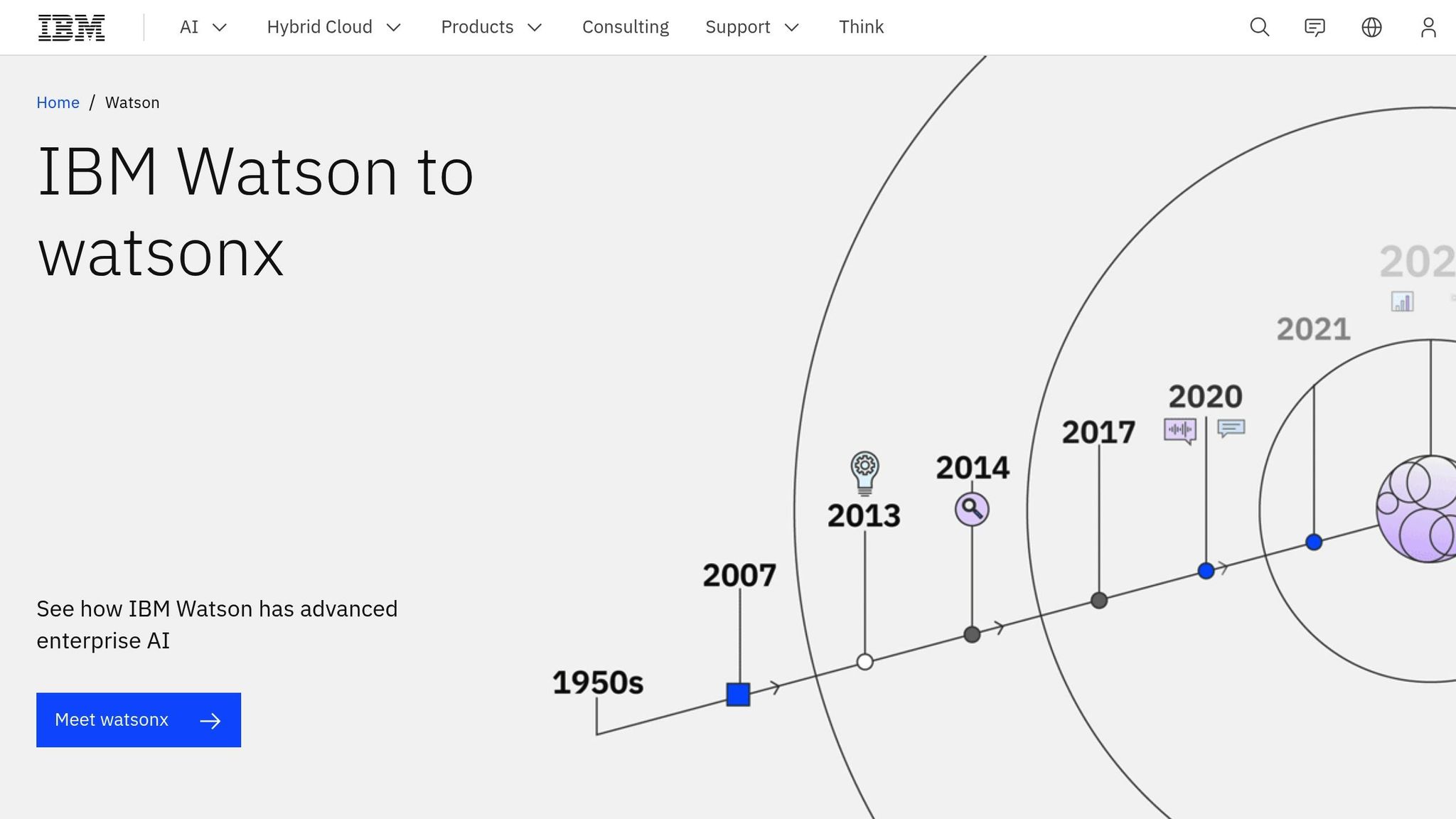
IBM Watson is a powerful AI platform designed to streamline decision-making across various business operations. It offers tools for data processing, model training, and deployment, making it easier for companies to embed AI-driven decision support directly into their workflows.
One of Watson's standout features is its ability to operate in hybrid cloud environments, allowing it to integrate smoothly with existing IT systems. This setup ensures businesses can expand their AI capabilities as their operational demands grow.
Industries like healthcare, finance, manufacturing, and legal rely on Watson to analyze complex datasets and provide insights for critical decisions. Its strong performance and scalability highlight the growing role of AI in enterprise-level decision-making.
Platform Comparison Table
Selecting the right AI decision-making platform comes down to your specific goals, budget, and technical needs. Here's a snapshot of how some leading platforms stack up across key criteria:
| Platform | Starting Price | Key Strengths | Best Use Cases | Integration Options |
|---|---|---|---|---|
| CrewAI | $29/month | Multi-agent collaboration, role-based AI teams | Complex workflows, team-based decisions | API, webhooks, Slack, Microsoft Teams |
| Vertex AI Agent Builder | $0.002 per request | Google Cloud integration, scalable infrastructure | Enterprise AI, large-scale deployments | Google Workspace, BigQuery, Cloud Storage |
| Kubiya.ai | $50/month per user | DevOps automation, infrastructure management | IT operations, deployment decisions | Kubernetes, Docker, Jenkins, GitLab |
| H2O.ai | $99/month | AutoML capabilities, model interpretability | Data science, predictive analytics | Python, R, Spark, Hadoop, AWS, Azure |
| Lindy AI | $19/month | Personal productivity, task automation | Individual workflows, scheduling decisions | Calendar apps, email, CRM systems |
| Relevance AI | $79/month | No-code AI workflows, vector databases | Marketing automation, content decisions | Zapier, HubSpot, Salesforce, Shopify |
| IBM Watson | Custom pricing | Enterprise-grade security, hybrid cloud | Healthcare, finance, legal decisions | IBM Cloud, on-premises, third-party clouds |
This table highlights the key differences, but let’s dig deeper into pricing, integration, and scalability to help you make a more informed choice.
Pricing Insights
AI spending is on the rise, with projections showing an average monthly spend of $85,521 by 2025 and nearly half of organizations planning investments exceeding $100K. For those with tighter budgets, Lindy AI stands out as the most affordable option at $19 per month, perfect for individual users or small teams exploring AI tools. Mid-tier platforms like CrewAI and Relevance AI balance affordability with robust capabilities, while enterprise-oriented solutions such as IBM Watson cater to large-scale operations with custom pricing models.
Integration and Scalability
Each platform’s integration options reflect its intended use. For enterprise-level needs, Vertex AI Agent Builder and IBM Watson shine with their ability to support large-scale deployments and complex infrastructure. Meanwhile, tools like Lindy AI focus more on personal productivity, offering seamless connections to everyday apps like calendars and email.
For those prioritizing quick deployment and predictable costs, pre-built platforms like these make it easier to measure ROI while scaling their AI capabilities. Whether you're an individual user or a large enterprise, there's a platform tailored to your needs.
Conclusion
AI decision-making platforms in 2025 cater to everyone - from solo entrepreneurs to massive global enterprises. The key to choosing the right platform lies in considering your budget, technical requirements, and the scale of your operations, as discussed earlier.
For those just starting out, platforms like Lindy AI offer user-friendly automation tools that are easy to navigate. On the other hand, CrewAI and Relevance AI are better suited for growing businesses that need to handle more complex workflows.
If you're managing a large-scale operation, platforms such as Vertex AI Agent Builder and IBM Watson provide secure, scalable, and fully integrated solutions tailored for enterprise needs. Meanwhile, technical teams focusing on infrastructure automation might explore tools like Kubiya.ai, and data science teams looking for advanced features like AutoML and model interpretability will find value in platforms designed with those priorities.
The best way to begin is by defining your specific use cases and testing out platforms through free trials or demos. Taking the time to assess your needs thoroughly will help you choose a platform that grows alongside your business, ensuring it remains a valuable tool as your operations expand.
FAQs
What should businesses consider when selecting an AI decision-making platform from the 2025 list?
When choosing an AI decision-making platform in 2025, businesses need to prioritize a few critical factors. Look for a platform that integrates seamlessly with your existing systems, scales effortlessly as your needs grow, and allows for quick deployment. These qualities can make a significant difference in how smoothly the platform fits into your operations.
Beyond that, evaluate features like privacy protections, affordability, and the quality of customer support. It's also essential to ensure the platform aligns with your business objectives and delivers clear, measurable outcomes. This way, you can ensure you're getting the most value for your investment.
How can AI decision-making platforms be integrated into existing business systems, and what challenges might arise?
Integrating AI decision-making platforms into business systems can simplify operations and boost efficiency, but it’s not without obstacles. Key challenges often include poor data quality, compatibility issues with older systems, and organizational resistance to change.
To address these issues, companies should prioritize better data management, update systems to support AI integration, and cultivate an environment that welcomes innovation. Communicating the platform’s benefits and potential ROI clearly can also help align teams and smooth the transition to AI-powered workflows.
What are the benefits and challenges of using AI decision-making platforms for small businesses compared to large enterprises?
AI decision-making platforms bring a lot to the table for businesses of all sizes. For small businesses, these tools can be a game-changer. They automate tedious tasks, boost efficiency, and offer insights into customer behavior that can help shape smarter strategies. By streamlining operations and using data to guide decisions, small companies can stay competitive even in crowded markets.
When it comes to large enterprises, the advantages scale up. These platforms can handle the complexity of large-scale operations, speed up decision-making, and help allocate resources more effectively. With the ability to process massive amounts of data, they provide insights that support long-term planning and strategy.
That said, challenges exist. Small businesses often face hurdles like steep costs, high data demands, and the risk of biases in AI systems - issues that can be tough to tackle with limited resources. Large enterprises, while better equipped to manage these problems, may grapple with maintaining transparency and ensuring AI decisions are easy to explain across their vast operations. Striking the right balance between these benefits and challenges is crucial to making the most of AI decision-making tools.



